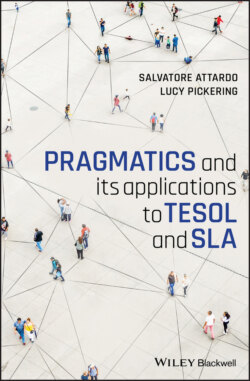Читать книгу Pragmatics and its Applications to TESOL and SLA - Salvatore Attardo - Страница 17
1.1.4 The Semantics/Pragmatics Boundary
ОглавлениеAs just mentioned earlier, one approach has been to argue that semantics is truth-functional, whereas pragmatics would deal with non-truth-functional aspects of meaning, as famously expressed in the formula:
Pragmatics = meaning - truth conditions
This definition has the advantage that it is neat: semantics would be responsible for the literal meaning of a sentence, whereas pragmatics would be responsible for any “extra” meaning. Consider the following example: The horse is not in the barn. Setting aside the fact that the notion of literal meaning has itself been seriously challenged, we could describe the literal meaning of the sentence as The location of the horse is not the barn. Put it differently, the horse may be anywhere but not in the barn.
What could the pragmatics of the utterance be? It depends on the context: suppose that there are horse thieves roaming in the area. Uttering The horse is not in the barn could imply that it has been stolen. If the hearer is a person whose job was to make sure that the horse was put in the barn, the utterance may be a threat of punishment. If the speakers are spies or agents of the secret service, this could mean that a subject has not reached their destination.
The problem, of course, is that the “literal” meaning of The horse is not in the barn depends, in part, on the disambiguation of its components. Let’s start with “is.” “Is” has many meanings; contrast
(3) This is Paul.
The book is yellow.
The book is 5 dollars.
The book is 300 pages long.
It’s two hours to Dallas.
Paul is home/in the barn.
In these examples, “is” expresses identity, quality, cost, length, duration, location, and many more concepts. In fact, the verb “to be” does not have much meaning (unlike a verb like “kick”) and thus must rely heavily on context to disambiguate it. In the case of our example, which of these meanings applies to “being in the barn”? Probably the location one (compare the example: Paul is home). But of course, disambiguation is, at least in part, a pragmatic process. Then there is the problem of the determinative article: it is “the horse” not “a horse,” which means it is a horse known to the speakers or such that it can be uniquely identified. Needless to say, “known to the speakers” is a pragmatic notion. So the idea of a neat boundary between semantics and pragmatics seems unlikely.
